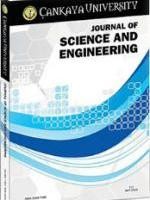Speed Policies and Guidelines For The Urban Roadway Network in Al-Ramadi City
Free-flow speed, speed limit, design speed, guidelines
Speed Policies and Guidelines For The Urban Roadway Network in Al-Ramadi City
Free-flow speed, speed limit, design speed, guidelines,
___
- S. Nikiforos, et.al., Analysis of inconsistencies related to design speed, operating speed, and speed limits, KTC-06-12/SPR286-05-1F Research Report, (2007).
- M. D. Deardoff, B. N. Wiesner, J. Fazio, Estimating Free-Flow Speed from Speed Limit Signs, 6th International Symposium on Highway Capacity and Quality of Service, (2011), 306–316.
- A. M. Figuero and A. P. Tarko, Speed factors on two-lane rural highways in free-flow conditions, Transport RES REC 1912 (2005), 46–9.
- K. Fitzpatrick, P. Carlson, M. Brewer, M. Wooldridge, S. Miaou, Design, speed, operating speed, and posted speed practices. Report Submitted to Washington, DC., NCHRP504, (2003).
- Transportation Research Board, National research council highway capacity manual HCM, Washington, D.C., (2010).
- E. T. Donnell, K. M. Mahoney, and J. M. Mason, Conceptual approach to relate design speed, operating speed, and posted speed limits, AB02H0501 Annual Meeting, (2002).
- American Association of State Highway and Transportation Officials, A Policy on Geometric Design of Highways and Streets, (2011).
- Federal Highway Administration, U.S. Department of Transportation, Manual on uniform traffic control devices for streets and highways, Washington, D.C., (2011).
- ITE Technical Committee 97-12, Parma, K., chair, Survey of speed zoning practices, ITE Informational Report, Institute of Transportation Engineers, Washington, D.C., (2001).
- Yayın Aralığı: Yılda 2 Sayı
- Başlangıç: 2009
- Yayıncı: Çankaya Üniversitesi
Speed Policies and Guidelines For The Urban Roadway Network in Al-Ramadi City
Marjan Kuchaki Rafsanjani, Sadegh Eskandari
Numerical Solution of Differential Equations by Using Chebyshev Wavelet Collocation Method
Convergence Analysis of Extended Global FOM and Extended Global GMRES For Matrix Equations AXB = F
